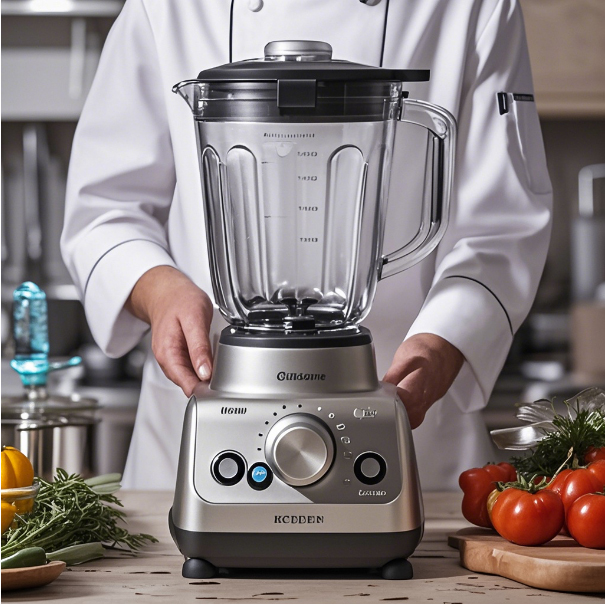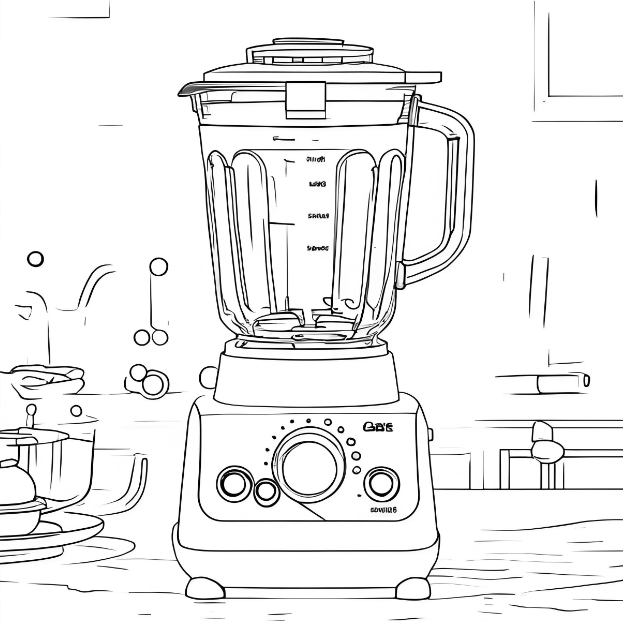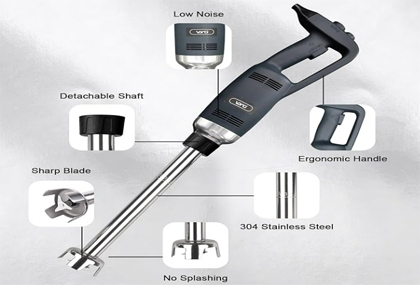Design of Kitchen Blender Models: The Perfect Fusion of Innovation and Practicality
Nov 26,2024
461
In 2024, the blender has become one of the indispensable tools. It can efficiently blend various ingredients into fine mixtures, providing great convenience for cooking and baking. So, how is an excellent kitchen blender model designed?

I. Analysis of Functional Requirements
Firstly, when designing a kitchen blender model, it is necessary to clarify its functional requirements. Generally speaking, a kitchen blender should possess the following functions:
Powerful blending ability: It should be able to easily blend various ingredients, including fruits, vegetables, meats, nuts, and so on. For harder ingredients like carrots and nuts, the blender should have sufficient power and sharp blades to ensure the blending effect.
Multiple blending speeds: Different ingredients require different blending speeds. Therefore, the kitchen blender should offer multiple blending speed options so that users can adjust according to the actual situation. For example, low-speed blending is suitable for soft ingredients, while high-speed blending is suitable for harder ingredients.
Safe and reliable: The kitchen blender should ensure the safety of users during the usage process. This includes designing features such as safety locks, non-slip bases, and overheating protection to prevent accidents from occurring.
Easy to clean: The blender needs to be cleaned after use, so the design should take into account components that are easy to disassemble and clean. For example, the blending cup and blades should be easy to disassemble to allow users to clean them thoroughly.
II. Appearance Design
Apart from functional requirements, appearance design is also an important aspect of kitchen blender model design. An aesthetically pleasing and fashionable blender can not only enhance the overall taste of the kitchen but also increase users' desire to use it.

Shape design: The shape of the kitchen blender should be simple and elegant, conforming to the aesthetic trends of modern homes. A streamlined design can be adopted to reduce edges and corners, making the blender look more rounded and soft. Meanwhile, different color combinations can also be considered to meet users' personalized needs.
Material selection: Choosing appropriate materials is crucial for both the appearance and performance of the kitchen blender. Generally, the shell of the blender can be made of plastic or metal materials. Plastic materials are lightweight, durable, and have a lower cost; metal materials are stronger, more durable, and have a higher texture. In addition, the blending cup should be made of a transparent material so that users can observe the blending process.
Ergonomic design: When designing the kitchen blender, the principles of ergonomics should be fully considered to make the operation of the blender more comfortable and convenient. For example, the handle of the blending cup should be designed to be easy to hold, and the operation buttons should be arranged reasonably for the convenience of users' operation.
III. Internal Structure Design
The internal structure design of the kitchen blender directly affects its performance and service life. The following are some key points in the internal structure design:
Motor selection: The motor is the core component of the kitchen blender, and its performance directly determines the blending ability and service life of the blender. A motor with moderate power, low noise, and good stability should be selected. Meanwhile, a variable frequency motor can also be considered to achieve precise control of different blending speeds.
Blade design: Blades are one of the key components of the blender, and their quality and design directly affect the blending effect. Sharp and durable blades should be selected, and the shape and angle of the blades should be designed reasonably to ensure uniform and fine blending. In addition, a multi-blade design can also be considered to improve the blending efficiency.
Transmission system design: The design of the transmission system should ensure that the power of the motor can be effectively transmitted to the blades, while also ensuring the stability and reliability of the transmission system. Gear transmission or belt transmission and other methods can be adopted, and the choice can be made according to the actual situation.
Heat dissipation design: The motor will generate heat during the working process. If the heat dissipation is poor, it will affect the performance and service life of the motor. Therefore, a reasonable heat dissipation system should be designed to ensure that the motor can work under normal temperature conditions. Heat dissipation fans, heat sinks, and other methods can be used for heat dissipation.
IV. User Experience Design
In addition to functional, appearance, and internal structure designs, user experience design is also an important aspect of kitchen blender model design. A good user experience can improve user satisfaction and loyalty.
Simple operation: The operation of the kitchen blender should be as simple and convenient as possible. One-button operation, touch screen operation, and other methods can be adopted to reduce users' operation steps. Meanwhile, clear operation instructions and indicator lights can also be provided so that users can understand the working status of the blender.
Noise control: The blender will generate noise during the working process, which will affect users' usage experience. Therefore, effective noise control measures should be taken, such as using soundproof materials and optimizing the motor design, to reduce the noise level of the blender.
Intelligent design: With the continuous development of science and technology, intelligent design has become a development trend of kitchen appliances. Intelligent functions, such as automatic ingredient recognition, intelligent speed adjustment, and remote control, can be considered to be added to the kitchen blender to improve users' usage experience.
In conclusion, an excellent kitchen blender model design needs to comprehensively consider multiple aspects such as functional requirements, appearance design, internal structure design, and user experience design. Only by striving for excellence in these aspects can a practical and beautiful kitchen blender be designed to bring a better cooking experience to users.





